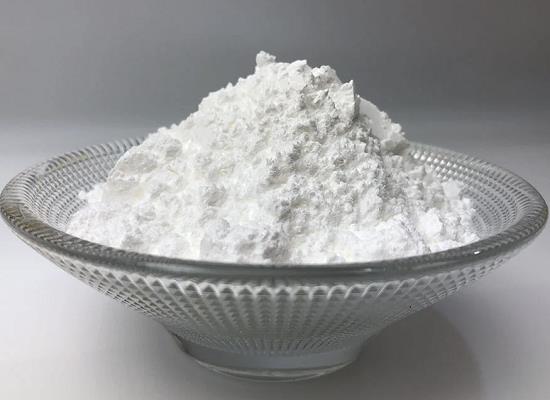Fenchone: Natural Occurrence, Metabolism and Bioactivity
Nov 20,2024
General Description
Fenchone, a compound with a pleasant aroma, is primarily sourced from sweet fennel essential oil but can also be found in other plants like anise. Its natural origin makes it popular in perfumery and food industries. In metabolism studies, fenchone was found to undergo oxidation in the liver, involving enzymes like CYP2A6 and CYP2B6. These enzymes play a key role in producing hydroxylated metabolites. Additionally, fenchone exhibits diverse bioactivities such as antioxidant, antimicrobial, and cytotoxic properties. Overall, fenchone's natural origin, metabolic pathways, and bioactivities make it a valuable ingredient with various applications.

Figure 1. Fenchone
Natural Occurrence
Fenchone, a compound known for its distinct and pleasant aroma, primarily originates from the essential oil extracted from sweet fennel. Sweet fennel, utilized widely in herbal medicine and culinary practices, serves as the primary natural source of this compound. However, Fenchone can also be found in smaller quantities in other plants, including anise and star anise, contributing to their unique fragrances. Renowned for its refreshing and sweet scent, Fenchone finds extensive applications in perfumery and as a flavoring agent in various food products. Its natural origin assures both safety and purity, rendering it a preferred choice in the cosmetic and food industries. The reliance on natural sources for Fenchone underscores its appeal to consumers seeking natural and authentic ingredients. The utilization of Fenchone from sweet fennel and other botanical sources highlights the significance of sustainable and environmentally friendly practices in obtaining natural compounds for various applications. Overall, Fenchone's natural origins, along with its versatile applications and pleasant aroma, make it a valuable ingredient in industries ranging from perfumery to culinary arts. 1
Metabolism
The in vitro metabolism of (+)-fenchone was examined in human liver microsomes and recombinant enzymes. Biotransformation of (+)-fenchone was investigated by gas chromatography-mass spectrometry. (+)-Fenchone was found to be oxidized to 6-exo-hydroxyfenchone, 6-endo-hydroxyfenchone and 10-hydroxyfenchone by human liver microsomal P450 enzymes. The formation of metabolite of (+)-fenchone was determined by relative abundance of mass fragments and retention time with GC. CYP2A6 and CYP2B6 in human liver microsomes were major enzymes involved in the hydroxylation of (+)-fenchone, based on the following lines of evidence. First, of eleven recombinant human P450 enzymes tested, CYP2A6 and CYP2B6 catalyzed oxidation of (+)-fenchone. Second, oxidation of (+)-fenchone was inhibited by thioTEPA, (+)-menthofuran anti-CYP2A6 and anti-CYP2B6 antibodies. Finally, there was a good correlation between CYP2A6, CYP2B6 contents and (+)-fenchone hydroxylation activities in liver microsomes of 8 human samples.2
Bioactivity
Fenchone is a natural monoterpene abundantly present in fennel essential oil. It is known for its wound healing properties but its other biological activities are less explored.
Researchers used an in silico structural similarity searching approache to identify various biological activities of fenchone. The identified biological activities of fenchone were validated by conducting DPPH free radical scavenging assay, MTT assay, well diffusion assay for antimicrobial activity and enzymatic assays to analyze the activity of different antioxidant enzymes.
Camphor was found to possess maximum structural similarity with fenchone. Molecular docking demonstrated that the binding modes of fenchone were also similar to camphor against protein Cytochrome CYP101D1 (PDB ID: 4C9K). Fenchone also demonstrated to possess an antioxidant activity (IC50: 3.32±0.008mM), an antimicrobial activity (MIC: 0.49mM) and a very strong antifungal activity. Fenchone protects yeast cells from H2O2 induced cytotoxicity and is cytotoxic to cancerous Hela cells (IC50: 12.63±0.12 μM). Fenchone treatment also showed the reduced activity of antioxidant enzymes i.e glutathione-S-transferase, catalase and lipid peroxidase.3
References:
[1] OMARI N E, BALAHBIB A, BAKRIM S, et al. Fenchone and camphor: Main natural compounds from Lavandula stoechas L., expediting multiple in vitro biological activities[J]. Heliyon, 2023, 27 1. DOI:10.1016/j.heliyon.2023.e21222.
[2] M MIYAZAWA K G. Metabolism of (-)-fenchone by CYP2A6 and CYP2B6 in human liver microsomes.[J]. Xenobiotica, 2007, 37 2. DOI:10.1080/00498250600917256.
[3] SUKHCHAIN SINGH J G Pawan Gupta. Virtual Structural Similarity Elucidates Bioactivity of Fenchone: A Phytochemical Enriched in Fennel Essential Oil.[J]. Current drug discovery technologies, 2020, 17 5. DOI:10.2174/1570163816666190321142826.
- Related articles
- Related Qustion
- Uses and side effect of Fenchone Sep 15, 2023
Fenchone is a bicyclic monoterpene and has strong anti-Inframatori, antioxidant, and anti-nociceptive properties.
Supplementation with pyridoxal 5'-phosphate monohydrate can synthesize neurotransmitters such as dopamine and serotonin, maintaining a healthy nervous system.....
Nov 4,2025Biochemical Engineering2-(2-Bromophenyl)pyrrolidine, a versatile compound with a brominated phenyl substituent and a stable pyrrolidine ring, holds significant promise in medicinal chemistry.....
Apr 18,2024API






